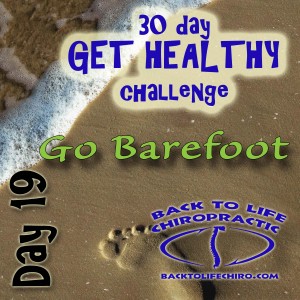(This is the 3rd in a series of posts about the causes of subluxations. If you haven’t read the first 2, here they are: Physical Causes of Subluxations, Chemical Causes of Subluxations)
Envision somebody who is depressed. What does his posture look like? Where are his shoulders? How about his head? What is his respiration rate?
 Visualize a very anxious or stressed person. Are his shoulders relaxed or drawn up tight? What is the tone of his facial and jaw muscles? Would you say his body is open or closed up?
Visualize a very anxious or stressed person. Are his shoulders relaxed or drawn up tight? What is the tone of his facial and jaw muscles? Would you say his body is open or closed up?
Now compare what you just visualized to “textbook normal” posture. You know…head up, shoulders back, chest out. Who do you think has the healthier spine and body? If you are chronically stressed, anxious, or otherwise emotionally worked up, eventually that internal strife will manifest physically. Welcome to the 3rd cause of subluxations.
Most of us can relate to stress and the negative impact it can have on our health. But you must understand that stress encompasses a wide range of emotions such as anger, grief, anxiety, depression, nervousness, etc.
We are all programmed with an internal fight of flight mechanism. It is a primal instinct necessary to self-preservation. Imagine hiking through the woods when suddenly you look up and see an angry bear 10 feet in front of you on the hiking trail. Whether you actually take off running or not, your body quickly primes itself for survival. Your adrenals burst into action and stress hormones like cortisol and adrenaline prepare you for  combat. Your heart rate and respiration increase, glucose is readily available to your muscles for quick action, and all your nerves and senses are on high alert. This is an invaluable response for sure, when faced with a life or death situation. But what about when your stress triggers are considerably less formidable than large fangs and claws, yet always seem to occupy the path in front of you?
combat. Your heart rate and respiration increase, glucose is readily available to your muscles for quick action, and all your nerves and senses are on high alert. This is an invaluable response for sure, when faced with a life or death situation. But what about when your stress triggers are considerably less formidable than large fangs and claws, yet always seem to occupy the path in front of you?
Enter the perils of chronic stress. You see, our survival mechanism was never meant to run at full throttle for any longer than short bursts. Instead, it is meant to look more like this: Encounter danger, make the appropriate physiological adjustments, remove yourself from danger, reestablish physiological balance. The problem for many of us is that we never come back into balance. Instead of meeting up with danger and high-tailing it out of there, we are faced with daily impending demands that we can’t run away from. Work deadlines, uncomfortable social gatherings, presentations, interviews, sales calls, appointments, in-laws, parenting, litigation. Did I mention in-laws?
 Our bodies simply weren’t designed to operate at elevated stress levels for extended periods of time. Living your life with a high heart rate, blood pressure, blood sugar, and respiration is a recipe for strokes, heart attacks, and diabetes. And stooped posture, tense muscles, and irritated and inflamed nerves set the stage for chronic subluxations.
Our bodies simply weren’t designed to operate at elevated stress levels for extended periods of time. Living your life with a high heart rate, blood pressure, blood sugar, and respiration is a recipe for strokes, heart attacks, and diabetes. And stooped posture, tense muscles, and irritated and inflamed nerves set the stage for chronic subluxations.
Besides the direct postural impact of stress that we opened this post with, you can see that there is also a profound influence on the body’s systems-circulatory, respiratory, endocrine, and so on. And as is usually the case, it all comes back to the nervous system. When chronic stress affects nerve function, the resultant impact on that stress increases exponentially. More stress equals more nerve irritation equals more health problems. So what’s a person to do?
Get adjusted regularly to clear pressure off your nervous system. The more powerful your nerve expression, the more efficiently your body runs, and therefore the stronger your response to stress. The key is to better equip your body on the inside for the inevitable stresses that will attack it from the outside.
Move your body consistently. Exercise is an excellent release of physical and emotional tension and is a great  equalizer when faced with chronic stress.
equalizer when faced with chronic stress.
Feed your body well. The last thing you need when you are under stress is to pile on more stress. That’s exactly what you do when you feed your body junk filled with preservatives and other artificial compounds. Instead, stick to organic whole food sources. Fuel your body for the fight.
Use a sounding board. Whether it’s a spouse, a trusted friend, or even a personal journal, sometimes you just need to vent and get whatever is bothering you off your chest and out of your head. Get it out and then let it go.
Get your rest. This is where most people fall short. Chronic stress leads to burnout and fatigue. Make sure you are replenishing your body by getting adequate amounts of sleep.
My experience in practice has taught me that chronic stress can absolutely cause or aggravate subluxations. Unless you are literally living under a rock, away from any external stimuli, you have stresses to deal with. It would be unrealistic (and frankly unhealthy) to try to eliminate all stress from your life. Instead, the goal should be to strengthen your body and maximize its capacity to deal with stress so that you can come through it healthy.

*Image credits to David Castillo Dominici, Stuart Miles, Hal Brindley, amenic181 @ freedigitalphotos.net



